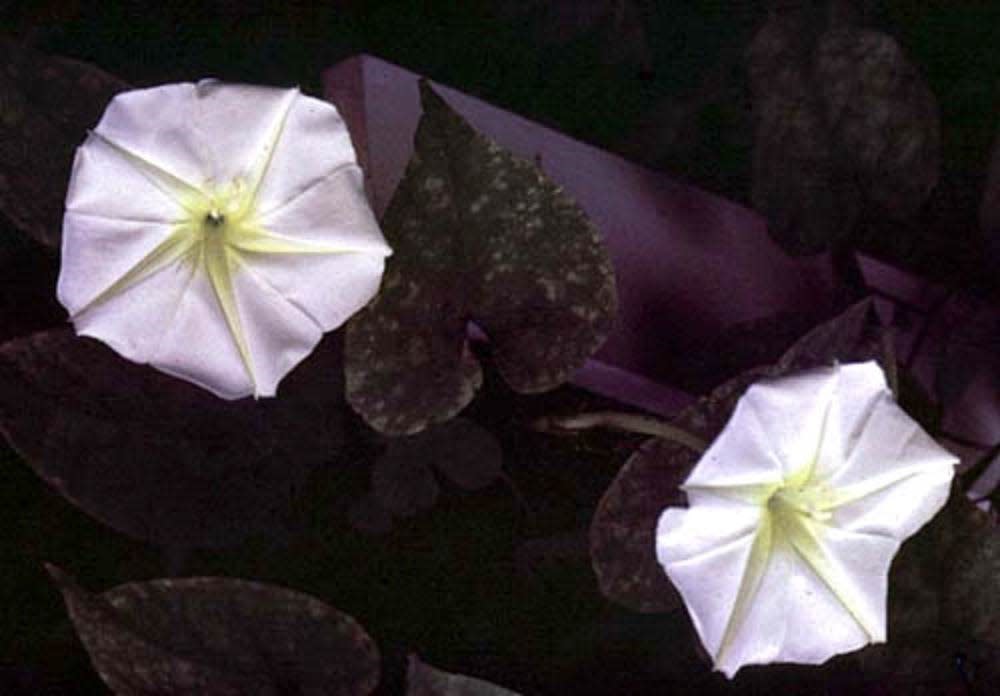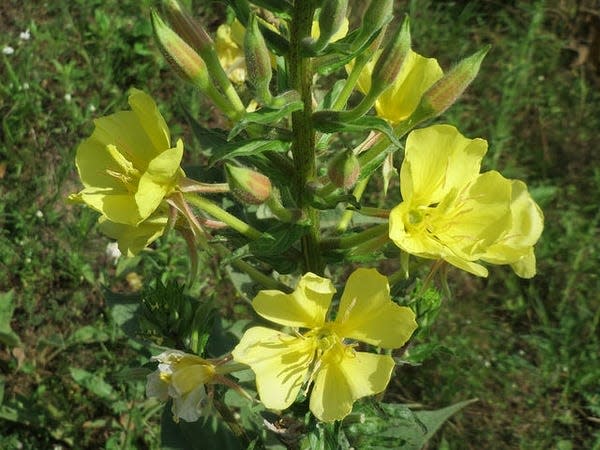Tips and tricks for growing a luminous moon garden

When planning a new garden, we typically think about the amount of sunlight which will be available to plants in a specific location at different times of the day, and perhaps how plants might look in the sunlight at certain times of the day. But have you ever thought about how plants in your garden or home landscape might look in the light of the moon? If the idea intrigues you, then perhaps you should consider planting a moon garden this spring.
Gardening:How is warmer-than-normal Columbus weather affecting your lawn and garden?
A moon garden is one which features plants with white flowers, plants with light colored or variegated foliage, and plants which bloom at night. And what would be more relaxing on a warm summer night than sitting outdoors in the garden in the dark listening to the cicadas sing, watching lightning bugs fliting above the grass, and admiring plants bathed in moonlight?

White, light colors ideal for moon gardens
Plants with white or other light-colored flowers are ideal choices for a moon garden. Consider flowering plants such as Shasta daisy (Leucanthemum superbum), four o’clock (Mirabillis jalapa), sweet alyssum (Lobularia maritima), yarrow (Achillea milliefolium), foxglove (Digitalis), petunias, New Guinea impatiens (Impatiens hawker), and geranium (Pelargonium).
Early spring bloomers such as lily of the valley (Convallaria majalis), daffodil (Narcissus), and azalea (Rhododendron spp.) will shine under the Pink Moon of April, while species such as chrysanthemum and autumn clematis (Clematis terniflora) will extend the season and glow under the Full Corn Moon of September and the Hunter’s Moon of October.
White-blooming hydrangea varieties such as Annabelle, Incrediball, Snow Queen, Little Lamb, and even the popular Limelight variety serve as an excellent backdrop for a moon garden. Trees with white flowers such as dogwood and magnolia can also be incorporated into a moon garden. Trees with light-colored bark such as birch can add visual interest to a moon garden.
Gardening:What's the secret to healthy soil? Earthworms.
Bright foliage reflects moonlight
Plants with light-colored or variegated foliage will also reflect the moonlight in a moon garden. Consider shrubs such as variegated dogwood (Cornus alba), variegated euonymus (Euonymus fortunei), and Japanese false cypress (Chamaecyparis). Herbaceous perennials with light colored foliage which are good candidates for inclusion in a moon garden include lamb’s ear (Stachys byzantine), silver mound artemisia (Artemisia schmidtiana) and varieties of variegated hostas (hosta plantaginea). And be sure to include annuals such as dusty miller (Jacobaea maritima) and white cosmos (Cosmos bipinnatus).

Night bloomers an excellent backdrop
Years ago, while visiting my wife’s grandmother, I noticed that just before sunset, many of the neighbors on her street had gathered together and were sitting in lawn chairs in the grass median that ran down the center of their quiet residential street. It looked as if the neighbors were expecting a parade to come down the street. I soon learned, however, that the neighbors had gathered to watch the nightly spectacle provided by a row of evening primrose plants growing in the grass median. The fragrant yellow flowers of evening primrose (Oenothera biennis) bloom each evening at sunset and close during the day. These plants make an excellent backdrop for a moon garden.
Other night-blooming plants include the aptly named moonflower (Ipomoea alba) and angel’s trumpet (Brugmansia).
Additions and accents for ambiance
In addition to white flowers, light-colored hardscapes and garden accents will reflect moonlight and add to the ambiance of a moon garden. A garden path of marble chips or crushed limestone will reflect the moonlight, as will white or light-colored garden accents such as a limestone obelisk, statue or birdbath. A garden bench, fence or trellis painted white can also be incorporated into a moon garden.
Low-voltage garden accent lights which direct light toward the ground can be added to moon gardens to supplement the often-fleeting natural light of the moon. A string of solar-powered lights strung on small trees or woody ornamental plants such as hydrangea can also provide soft light in a moon garden.
Planting a moon garden will allow you to enjoy plants and flowers at night without flooding the landscape with lots of overhead light.
Mike Hogan is Extension educator, Agriculture and Natural Resources, and associate professor with Ohio State University Extension.
This article originally appeared on The Columbus Dispatch: Night-blooming flowers and plants the perfect choice for moon gardens

